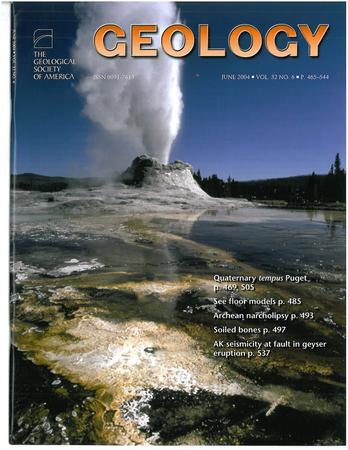与上升流有关的含铁矿物、微生物与奥陶系气候的达里威廉临界点
IF 4.6
1区 地球科学
Q1 GEOLOGY
引用次数: 0
摘要
奥陶系显生宙鲕状铁矿(poi)赋存于冷水环境,与其他poi典型的温暖湿润气候形成鲜明对比。本研究基于华南地区一套复杂的中-晚奥陶世poi,这些poi位于热带暖水沉积物中,而同时期的含铁鲕粒沉积物和含铁微生物岩则积聚在相对冷水环境中。研究表明,华南奥陶系含铁矿床虽然沉积背景不同,但岩石超微结构和δ56Fe同位素特征相似。这表明poi的形成不太可能由水温控制,而是可归因于微生物铁工厂,与冈瓦纳频繁的冷水入侵产生的活跃上升流有关。这一模式也解释了冈瓦纳近缘冷水区奥陶系含铁矿床的主要赋存。它们丰度的达里威廉峰值对应于冰库期和古热带冷水舌的开始,这在华南板块上创造了复杂的沉积环境。本文章由计算机程序翻译,如有差异,请以英文原文为准。
Upwelling-related ferruginous ooids, microbialites, and the Darriwilian tipping point of Ordovician climate
Cool-water settings characterize Ordovician occurrences of Phanerozoic ooidal ironstones (POIs), contrasting sharply with the warm and humid climate typical of other POIs. This geological puzzle was deciphered in this study based on a complex suite of Middle−Late Ordovician POIs in South China hosted in tropical sediments of a warm-water origin, and coeval ferruginous ooid-bearing sediments and ferruginous microbialites that accumulated in a relatively cool-water setting. Here, we demonstrate that, despite their different depositional settings, all Ordovician ferruginous deposits of South China share similar petrographic ultrastructures and δ56Fe isotopic signatures. This suggests that the formation of POIs was not likely controlled by water temperature but instead is attributable to a microbial iron factory, associated with active upwelling generated from frequent cool-water incursions from Gondwana. This model also explains the predominant occurrence of Ordovician ferruginous deposits in cool-water realms in peri-Gondwana. The Darriwilian peak of their abundance corresponds to the onset of an icehouse episode and a paleotropical cold-water tongue that created complex depositional environments across the South China plate.
求助全文
通过发布文献求助,成功后即可免费获取论文全文。
去求助
来源期刊

Geology
地学-地质学
CiteScore
10.00
自引率
3.40%
发文量
228
审稿时长
6.2 months
期刊介绍:
Published since 1973, Geology features rapid publication of about 23 refereed short (four-page) papers each month. Articles cover all earth-science disciplines and include new investigations and provocative topics. Professional geologists and university-level students in the earth sciences use this widely read journal to keep up with scientific research trends. The online forum section facilitates author-reader dialog. Includes color and occasional large-format illustrations on oversized loose inserts.
 求助内容:
求助内容: 应助结果提醒方式:
应助结果提醒方式:


